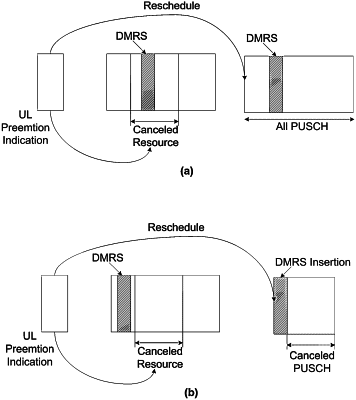| CPC H04W 72/1268 (2013.01) [H04L 5/0055 (2013.01); H04W 88/02 (2013.01)] | 24 Claims |

|
1. A user equipment (UE) for use in a wireless communication system, the UE comprising:
a communication module; and
a processor configured to control the communication module,
wherein the processor is configured to:
receive configuration information related to a cyclic period for monitoring an uplink (UL) preemption indicator;
receive scheduling information for a physical uplink shared channel (PUSCH) transmission;
after a reception of the scheduling information, receive a common physical downlink control channel (PDCCH) including the UL preemption indicator during a monitoring time configured by the cyclic period; and
based on the PUSCH transmission being overlapped with at least one resource part indicated by the UL preemption indicator within a reference time-frequency resource, cancel at least a portion of the PUSCH transmission based on the at least one resource part,
wherein a starting time of the reference time-frequency resource is located after the monitoring time, at least by a time interval associated with a PUSCH processing time.
|